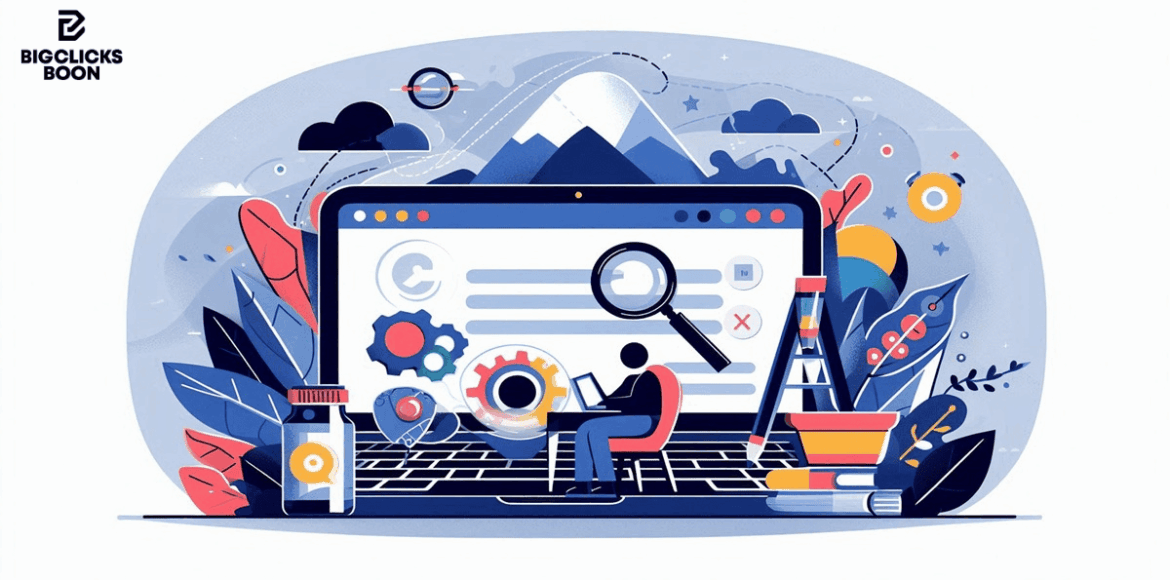How to Identify Which On-Page Elements Carry the Most Weight for SEO Google Rankings

Digital marketing and online presence are totally different when it comes to On-Page elements, achieving a prominent position on Google’s search results is paramount for online success. On-page SEO (Search Engine Optimization) plays a crucial role in determining how well your website ranks on Google and other search engines. By optimizing specific elements on your web pages, you can enhance visibility, attract organic traffic, and improve user engagement.
Introduction
On-page SEO involves optimizing various components of your website to align with search engine algorithms and user intent. Understanding and prioritizing these elements can significantly impact your site’s performance in search rankings. You must understand that algorithms keep on changing, hence you need to update yourself from time to time.
Also Read: SEO vs PPC: Which is Right for Your Business in 2025?
Which On-Page Element Carries the Most Weight for SEO?
While multiple on-page elements influence SEO, content quality stands out as the most impactful. High-quality, relevant, and informative content not only satisfies user intent but also signals to search engines that your site is authoritative and valuable. Google’s algorithms prioritize content that provides genuine value to users, making it a cornerstone of effective SEO strategies.
Key On-Page SEO Elements That Impact Google Rankings
- Title Tags: The title tag is a critical on-page element that serves as the clickable headline in search engine results. An optimized title tag should be concise, include the primary keyword, and accurately reflect the page’s content. For example, a compelling title tag might be: “10 Proven Strategies for Effective On-Page SEO.“
- Meta Descriptions: Meta descriptions provide a brief summary of the page content beneath the title in search results. A well-crafted meta description can improve click-through rates by enticing users to visit your page. Ensure it includes relevant keywords and a clear call-to-action.
- Headings (H1, H2, H3): Structured headings organize content and make it more readable for users and search engines. The H1 tag represents the main topic, while H2 and H3 tags denote subtopics. Proper use of headings enhances content hierarchy and relevance.
- URL Structure: Clean and descriptive URLs contribute to better user experience and SEO performance. A well-structured URL might look like: “www.example.com/on-page-seo-techniques.” Such URLs are easy to read and include relevant keywords.
- Internal Linking: Strategic internal linking connects related content within your website, aiding navigation and distributing link equity. This practice helps search engines understand the relationship between pages and improves overall site authority.
- Image Optimization: Optimizing images involves using descriptive file names, adding alt text, and compressing file sizes to enhance page load speed. Proper image optimization improves accessibility and contributes to better SEO performance.
Also Read: The Ultimate On-Page SEO Checklist: 14 Key Steps to Optimize Your Pages for Better Google Rankings
Optimization Techniques for High-Priority On-Page Elements
- Crafting SEO-Friendly Title Tags and Meta Descriptions: Incorporate primary keywords naturally, maintain appropriate length (50-60 characters for titles, 150-160 characters for meta descriptions), and ensure each page has unique tags.
- Optimizing Headings for Relevance and Readability: Use headings to break down content into digestible sections, include keywords where appropriate, and maintain a logical hierarchy.
- Enhancing Content for User Intent: Conduct thorough keyword research to understand what your audience is searching for, and create comprehensive content that addresses those queries effectively.
- Improving URL Structure: Keep URLs short, include relevant keywords, and avoid unnecessary parameters or numbers.
- Implementing Internal Linking Strategies: Link to related articles or pages within your site to keep users engaged and distribute authority across your site.
- Optimizing Images: Use descriptive alt text, choose appropriate file formats (e.g., JPEG for photographs, PNG for graphics), and compress images to reduce load times.
Also Read: 7 Best Long-Tail Keyword Research Tools to Find High-Value Keywords and Improve Your SEO Strategy
Common Mistakes in On-Page SEO and How to Avoid Them
- Keyword Stuffing: Overloading content with keywords can lead to penalties. Focus on natural incorporation of keywords that enhance readability.
- Ignoring Mobile Optimization: With a significant portion of users accessing sites via mobile devices, ensure your website is responsive and offers a seamless mobile experience.
- Neglecting Page Load Speed: Slow-loading pages can increase bounce rates. Optimize images, leverage browser caching, and minimize code to improve load times.
- Using Duplicate Content: Replicating content across pages can confuse search engines. Always strive for unique and original content.
- Improper Use of Header Tags: Skipping heading levels or misusing header tags can disrupt content structure. Maintain a logical flow with your headings.
Examples of Successful On-Page SEO Optimization Practices
Consider the case of a business that revamped its on-page SEO strategy by focusing on content quality and user intent. By conducting thorough keyword research, they identified topics their audience was interested in and created in-depth articles addressing those subjects. They also optimized title tags, meta descriptions, and improved internal linking. As a result, the website experienced a 35% increase in organic traffic over six months.
Also Read: Google Algorithm Updates You Need to Know: What Changed and How to Adapt Your SEO Strategy
Why BigClicks Boon is Your Go-To Expert for On-Page SEO Optimization
At BigClicks Boon, we specialize in optimizing on-page elements to maximize your website’s SEO impact. Our team of experts conducts comprehensive audits to identify high-impact SEO elements tailored to your business needs.
With a proven track record of enhancing search rankings, we employ data-driven strategies to ensure your content aligns with both user intent and search engine algorithms.
Conclusion
Focusing on key on-page elements is essential for improving your Google rankings. By prioritizing content quality, optimizing technical components, and avoiding common pitfalls, you can enhance your website’s visibility and user engagement.
Partner with BigClicks Boon to leverage expert on-page SEO optimization and drive your business toward online success.

